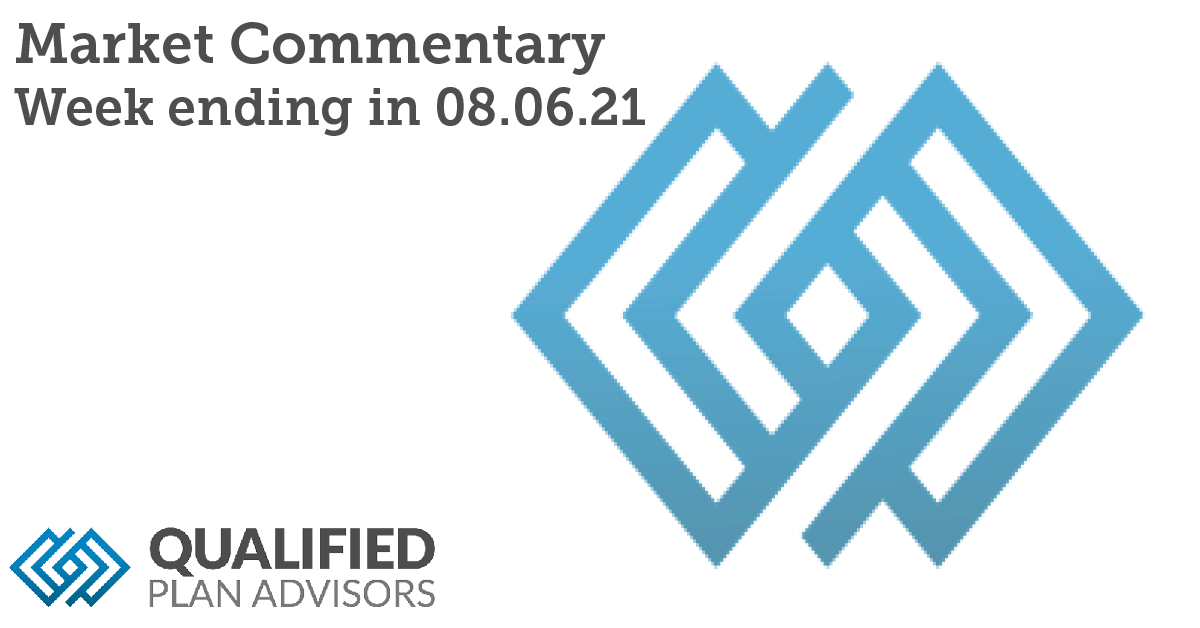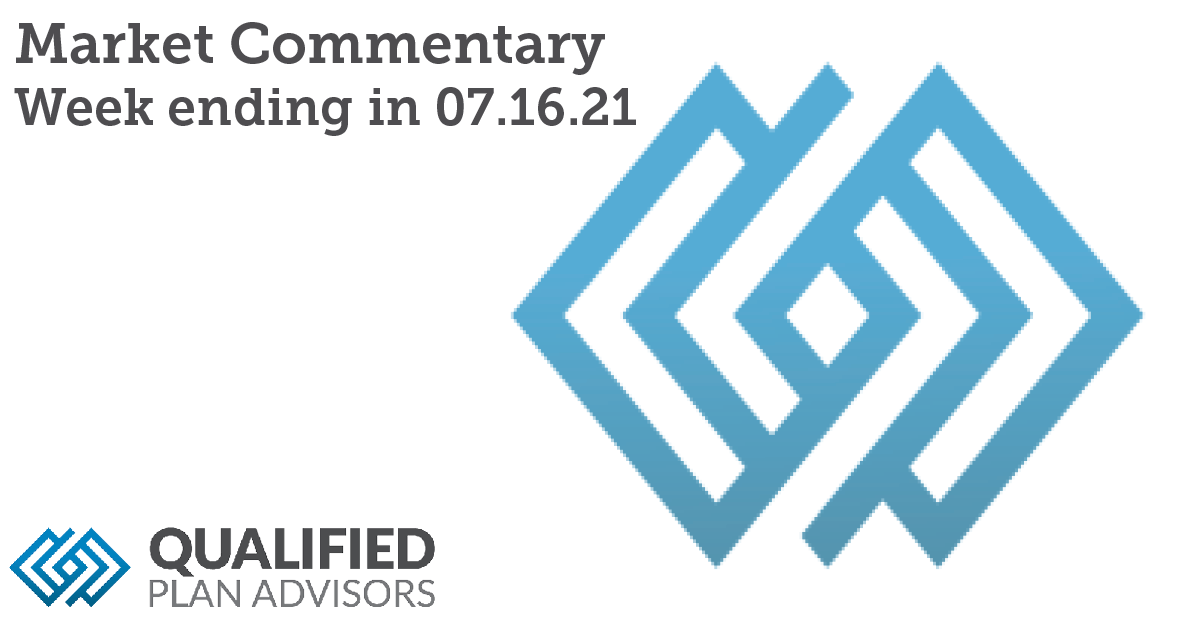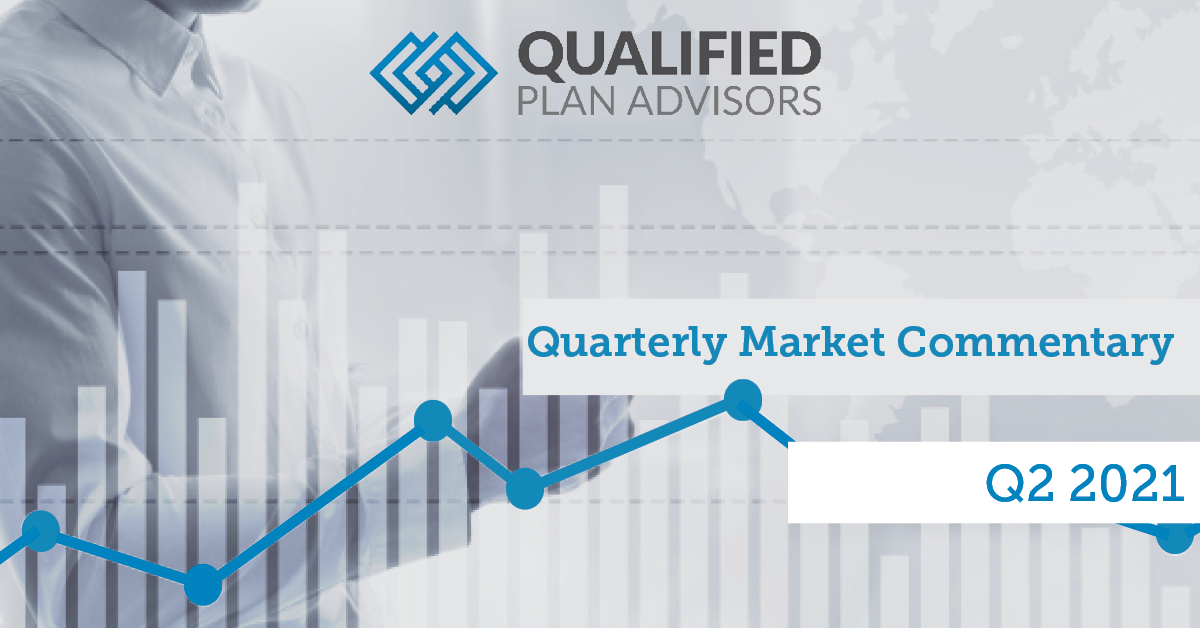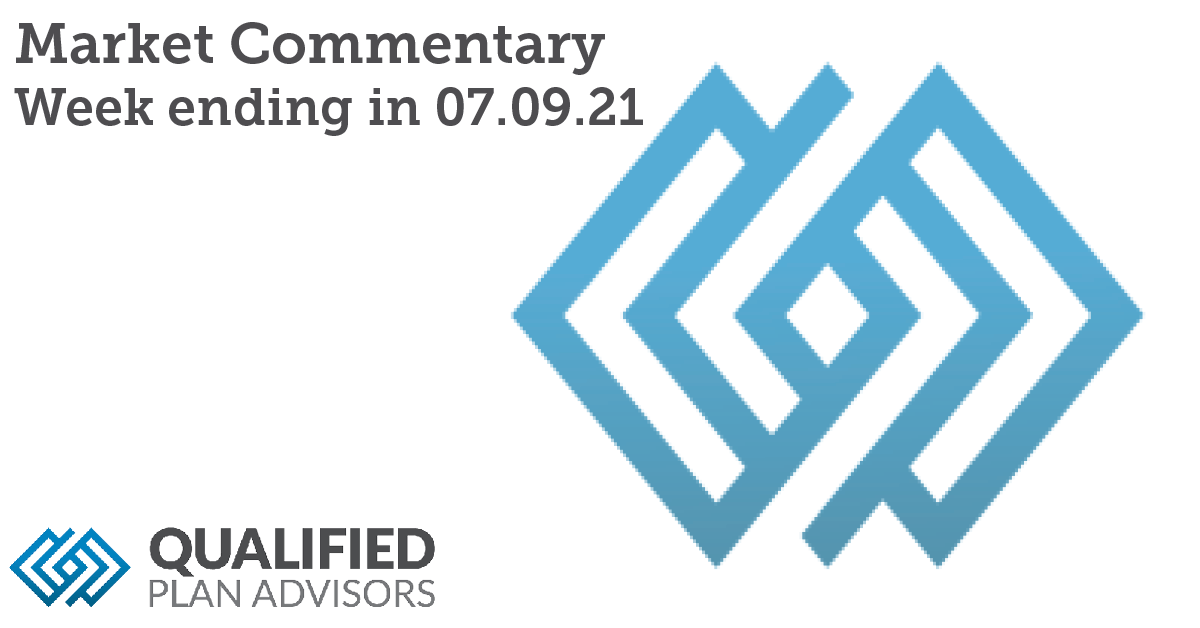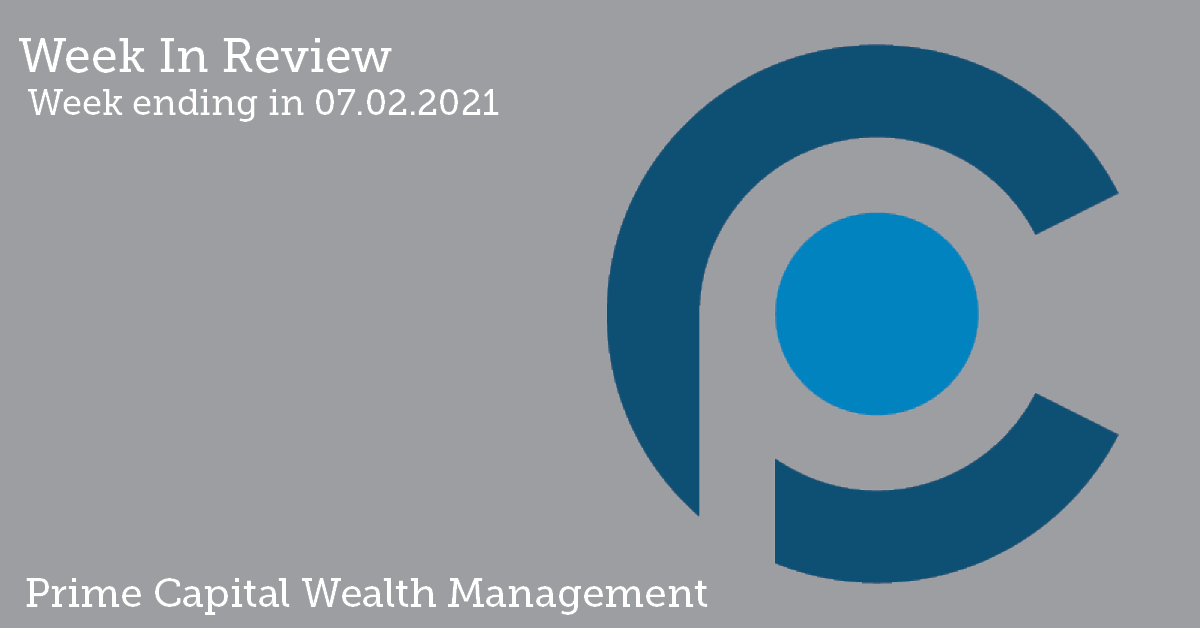Investors will often ask me whether they should have a taxable investment account, especially when that investor is evaluating the overall tax efficiency of their investments and corresponding accounts.
Back-to-School Savings: How Educators can Utilize 403(b) Plans to Save for Retirement
As back-to-school season rapidly approaches, educators may be too busy preparing for the upcoming year to think about their retirement savings. But for educators and employees in other non-profit sectors, you might have access to a great retirement savings vehicle that you may not know about — the 403(b) plan.
In their inception, 403(b) plans were run less like a retirement plan and more like a group of separate IRAs. Because the majority of them were run by one predominant recordkeeper, these plans had problems that affected a participant’s ability to grow their money and properly save for retirement.
First, this meant participants only had access to the investment options that the recordkeeper offered. Participants were not getting what is known as “open architecture”, meaning they did not have the opportunity to access the best large-cap growth funds in the marketplace. They were limited to the recordkeeper’s capabilities.
Second, participants in the early 403(b) plans found themselves in a guaranteed interest contract (GIC), which locks participants’ money in at a crediting rate lower than what would be found in the marketplace. It also would not allow participants to withdraw money faster than a seven to 10 year period, making it a fairly illiquid investment vehicle. At best, this prevented a participant’s account from growing at a reasonable rate. At worst, it also provided for a nasty surprise when a retiring participant was unable to withdraw a significant portion of the account.
When the IRS made some changes to 403(b) plans rules 10-15 years ago, they began to operate much more like 401(k) plans. Now, 403(b) plans are a great resource for educators and other non-profit employees, and the reputation often found around these plans is much less accurate. These plans offer many benefits to employees, such as:
- For most employees, 403(b) plans are essentially indistinguishable from 401(k) plans. The plan offers participants a chance to defer some of their paycheck to put away for retirement. This can happen in two ways. Participants can put away pre-tax money now and pay taxes on it when they take distributions later in life. Or, in a Roth option, participants can put away taxed money and let it grow tax-free.
- This savings vehicle allows you to expose your savings to the market, which presents the opportunity for it to grow at a much higher rate than if it were put away in a savings account or another bank account. A savings account will not grow your money enough to be ready for retirement.
- Investing in a 403(b) plan gives you the opportunity to have a portfolio that will be managed for you and will take into account your age, retirement goals, and risk tolerance to form the strategy right for you. You may even have access to a managed account, which is actively managed and takes into account all aspects of your financial situation.
- Some plan sponsors may offer a matching contribution, where they will match a certain percentage of your regular paycheck deferrals to invest in your account. If you aren’t taking advantage of a 403(b) plan with a matching contribution, you’re missing out on that bonus.
If you’re a plan sponsor, you should be ensuring all your employees know about the benefits of the plan. One way to be a competitive employer is to not only offer a good benefits program but to also show that you support your employees in their financial wellness and that you care that they have a good nest egg for retirement.
One way you can do this and be a good employer is to hire a company like ours, Qualified Plan Advisors, to educate your participants about their plan, investment, strategies, and overall financial wellbeing. With our expertise in financial planning, we can truly be a crucial tool for your employees to achieve their retirement goals.
As the school year starts, one thing you should not have to worry about is your retirement savings or financial wellness. For this reason, you should take advantage of your 403(b) plan, and, if available to you, talk to a financial advisor about how to achieve your retirement goals. At Qualified Plan Advisors, we know that working in the education, the medical, and non-profit field comes with a lot of pressure and is crucial to society, so we are here to take the stress out of financial planning.
Advisory services offered through Prime Capital Investment Advisors, LLC. (PCIA), a Registered Investment Advisor. Prime Capital Investment Advisors doing business as Qualified Plan Advisors, “QPA.” 6201 College Blvd., 7th Floor, Overland Park, KS 66211
Qualified Plan Advisors Creates New Position Responsible for Advisor Managed Accounts
Qualified Plan Advisors (QPA) is pleased to announce the hiring of Kevin Toledano as their first-ever Director of Managed Account Services. Toledano comes to the company with decades of industry experience, most recently having spent 15 years running the in-plan managed account program at AIG Retirement Services.
Week-in-Review: Week ending in 08.06.21
The Bottom Line
● Equities returned to their winning ways after last week’s fall. All major global equity indices posted gains for the week, are now positive for the year–most with double‐digit advances, and are at or near all‐time highs.
● The yield on the U.S. 10‐year Treasury rebounded from its lowest levels since February, to end the week at 1.30%after strong economic data showed the recovery continuing despite the spread of the Delta variant.
● AccordingtoFactSet,withabout90% of S&P500 companies having reported Q2 results, earnings growth is running at a blistering +88.7% pace with a 87% beat rate.
August brings a return to record highs
Global equities posted weekly gains, turning our market snapshot to the right entirely green for the week, and now for the year. The S&P 500 closed the week at another record high, its 44th record closing of 2021, for a +0.9% gain for the week. But Small Cap Value stocks were the best asset class for the week with a +1.1% gain, despite a ‐1.9% drubbing on Wednesday. A better‐than expected July employment report and another week of strong corporate earnings helped investors overcome concerns about rising inflation, the fast‐spreading Delta variant, and a regulatory crackdown on Chinese technology stocks. Earlier in the week data showed better‐than‐expected Factory Orders and an acceleration in the ISM Services Index to a record high. But it was the labor market that really bolstered stocks later in the week with fewer‐than‐expected unemployment claims on Thursday, followed by a stellar July employment report on Friday with upside surprises in new payrolls, a lower unemployment rate, better labor participation rates, as well as higher wages and hours worked. After several weeks of yields falling, the bounty of encouraging economic data helped Treasury yields reverse higher and the Treasury curve steepen.
Digits & Did You Knows
(NOT SO) FRIENDLY SKIES — The Federal Aviation Administration has received 3,715 reports about unruly passengers in 2021 and has initiated 628 investigations, compared with fewer than 150 in 2019. It is now asking airports and law enforcement to help mitigate the poor behavior (source: Federal Aviation Administration, WSJ).
DEBT LIMIT DEBATE — The nation’s debt ceiling limit was reset on Sunday 8/01/21 to our government’s outstanding debt as of that date (approximately $28.5 trillion). Ultimately the government will “run out of cash,” mostly likely in October or November, unless the debt ceiling is raised again (source: CBO, BTN Research).

Click here to see the full review.
—
Source: Bloomberg. Asset‐class performance is presented by using market returns from an exchange‐traded fund (ETF) proxy that best represents its respective broad asset class. Returns shown are net of fund fees for and do not necessarily represent performance of specific mutual funds and/or exchange‐traded funds recommended by the Prime Capital Investment Advisors. The performance of those funds may be substantially different than the performance of the broad asset classes and to proxy ETFs represented here. U.S. Bonds (iShares Core U.S. Aggregate Bond ETF); High‐YieldBond(iShares iBoxx $ High Yield Corporate Bond ETF); Intl Bonds (SPDR® Bloomberg Barclays International Corporate Bond ETF); Large Growth (iShares Russell 1000 Growth ETF); Large Value (iShares Russell 1000 ValueETF);MidGrowth(iSharesRussell Mid‐CapGrowthETF);MidValue (iSharesRussell Mid‐Cap Value ETF); Small Growth (iShares Russell 2000 Growth ETF); Small Value (iShares Russell 2000 Value ETF); Intl Equity (iShares MSCI EAFE ETF); Emg Markets (iShares MSCI Emerging Markets ETF); and Real Estate (iShares U.S. Real Estate ETF). The return displayed as “Allocation” is a weighted average of the ETF proxies shown as represented by: 30% U.S. Bonds, 5% International Bonds, 5% High Yield Bonds, 10% Large Growth, 10% Large Value, 4% Mid Growth, 4%Mid Value, 2% Small Growth, 2% Small Value, 18% International Stock, 7% Emerging Markets, 3% Real Estate.
Advisory services offered through Prime Capital Investment Advisors, LLC. (“PCIA”), a Registered Investment Adviser. PCIA doing business as Prime Capital Wealth Management (“PCWM”) and Qualified Plan Advisors (“QPA”).
© 2021 Prime Capital Investment Advisors, 6201 College Blvd., 7th Floor, Overland Park, KS 66211.
Month-in-Review: July 2021
Quick Takes
● U.S. Stocks back at all‐time highs. The S&P 500 closed July near record highs, its sixth consecutive monthly advance. But outside of U.S. large caps, the picture in July was much cloudier. U.S. Small cap fell ‐3.6% and overseas emerging markets plunged ‐6.7%.
● Disappearing act. The yield on the benchmark U.S. 10‐year Treasury yield fell ‐0.25 basis points in July, its largest monthly decline since March 2020. Yields are down for four straight months now, the first such stretch since the first four months of 2020. Yields rose four straight months from 12/20 through 3/21.
● China joins inflation and variants as key concerns. Chinese stocks ended July with steep declines, with Hong Kong’s Hang Seng index tumbling ‐9.9%, while the Shanghai Composite fell ‐5.4%. U.S.‐listed Chinese tech stocks plunged more than ‐22% in July.
● Uneven bars. Economic output is returning to pre‐pandemic levels for major economies but is taking more time for some countries than others. Business activity shows divergent recoveries as the U.S. and eurozone continued to rise in July, but Australia and emerging markets saw much weaker data.
Asset Class Performance
Stocks rallied to record highs again in July as the global economic recovery continued. However, sentiment is at risk as the more contagious Delta variant spreads and creates uncertainty about the recovery and the path to normalcy.

Global economies are largely improving, but at varying rates
The Bureau of Economic Analysis announced at the end of July that the U.S. economy has returned to pre‐pandemic levels for the second quarter through June. Although second quarter U.S. Gross Domestic Product (GDP) came in below economist expectations, growing at a +6.5% annual rate versus the forecast for +8.5%, it showed a robust rebound in household demand and put the U.S. economy above its pre‐pandemic peak on an inflation‐adjusted basis. Bloomberg economists noted that most of the downside surprise was from the trade and inventory components. Excluding trade and inventory showed growth at +7.9%. Further stripping out government spending, in which payments to banks for processing PPP loans caused a non‐recurring drop, put final sales to the domestic sector at +9.9%, an at an all‐time high. The Personal Consumption Expenditures (PCE) price index excluding food and energy costs, followed closely by Fed officials, climbed an annualized +6.1% in the second quarter, the biggest gain since 1983. As shown in the chart to the right, China and India have also surpassed pre‐pandemic economic growth. However, some countries have not kept pace and remain below their pre‐pandemic levels. Many European countries locked down more fully than the U.S. and didn’t have quite as much stimulus. And the fast‐spreading Delta variant is thwarting plans to lift lockdowns or pushing areas to return to restrictions.
 In Australia, Sydney was locked down for the first time in more than a year. Indonesia, the fourth most populous country in the world, is experiencing a spike in both infections and deaths. It has resisted tighter restrictions, but with only had about 5% of the country fully vaccinated it began additional curbs in hard‐hit areas. Of course, the Olympic games started which began in late July in Tokyo have no live fans after the government declared a state of emergency for the duration of the games. Nicolas Colas of DataTrek Research pointed to Apple mobility data to show the divergent recoveries and the challenges resulting from different levels of restrictions, infection rates, and vaccination levels. Mobility data in the U.S. and Europe showed positive trends and traffic that was near or above early 2020 levels. But Asia was seeing much lower mobility activity with Sydney under lockdown, Bangkok closing public spaces, and India just starting to ease restrictions after their devastating Delta surge.
In Australia, Sydney was locked down for the first time in more than a year. Indonesia, the fourth most populous country in the world, is experiencing a spike in both infections and deaths. It has resisted tighter restrictions, but with only had about 5% of the country fully vaccinated it began additional curbs in hard‐hit areas. Of course, the Olympic games started which began in late July in Tokyo have no live fans after the government declared a state of emergency for the duration of the games. Nicolas Colas of DataTrek Research pointed to Apple mobility data to show the divergent recoveries and the challenges resulting from different levels of restrictions, infection rates, and vaccination levels. Mobility data in the U.S. and Europe showed positive trends and traffic that was near or above early 2020 levels. But Asia was seeing much lower mobility activity with Sydney under lockdown, Bangkok closing public spaces, and India just starting to ease restrictions after their devastating Delta surge.
 The chart of PMI data to the left reflects the stark contrast of deviating business activity with the U.S. and eurozone well into economic expansion but Australia falling back into economic contraction. South America has seen little disruption from the Delta variant but is struggling with its own highly infectious Gamma variant. Bottom Line: The global economy experienced a largely synchronized recovery following the initial COVID‐19 pandemic beginning in the Spring of 2020 and the following year. But different levels of vaccination rates, and subsequent waves of COVID variants across—and within—countries, means the recovery is now increasingly divergent. Rebalancing and risk management will take on additional importance in this more challenging environment.
The chart of PMI data to the left reflects the stark contrast of deviating business activity with the U.S. and eurozone well into economic expansion but Australia falling back into economic contraction. South America has seen little disruption from the Delta variant but is struggling with its own highly infectious Gamma variant. Bottom Line: The global economy experienced a largely synchronized recovery following the initial COVID‐19 pandemic beginning in the Spring of 2020 and the following year. But different levels of vaccination rates, and subsequent waves of COVID variants across—and within—countries, means the recovery is now increasingly divergent. Rebalancing and risk management will take on additional importance in this more challenging environment.
Click here to see the full review.
—
©2021 Prime Capital Investment Advisors, LLC. The views and information contained herein are (1) for informational purposes only, (2) are not to be taken as a recommendation to buy or sell any investment, and (3) should not be construed or acted upon as individualized investment advice. The information contained herein was obtained from sources we believe to be reliable but is not guaranteed as to its accuracy or completeness. Investing involves risk. Investors should be prepared to bear loss, including total loss of principal. Diversification does not guarantee investment returns and does not eliminate the risk of loss. Past performance is no guarantee of comparable future results.
Source: Bloomberg. Asset‐class performance is presented by using market returns from an exchange‐traded fund (ETF) proxy that best represents its respective broad asset class. Returns shown are net of fund fees for and do not necessarily represent performance of specific mutual funds and/or exchange‐traded funds recommended by the Prime Capital Investment Advisors. The performance of those funds may be substantially different than the performance of the broad asset classes and to proxy ETFs represented here. U.S. Bonds (iShares Core U.S. Aggregate Bond ETF); High‐YieldBond(iShares iBoxx $ High Yield Corporate Bond ETF); Intl Bonds (SPDR® Bloomberg Barclays International Corporate Bond ETF); Large Growth (iShares Russell 1000 Growth ETF); Large Value (iShares Russell 1000 ValueETF);MidGrowth(iSharesRussell Mid‐CapGrowthETF);MidValue (iSharesRussell Mid‐Cap Value ETF); Small Growth (iShares Russell 2000 Growth ETF); Small Value (iShares Russell 2000 Value ETF); Intl Equity (iShares MSCI EAFE ETF); Emg Markets (iShares MSCI Emerging Markets ETF); and Real Estate (iShares U.S. Real Estate ETF). The return displayed as “Allocation” is a weighted average of the ETF proxies shown as represented by: 30% U.S. Bonds, 5% International Bonds, 5% High Yield Bonds, 10% Large Growth, 10% Large Value, 4% Mid Growth, 4%Mid Value, 2% Small Growth, 2% Small Value, 18% International Stock, 7% Emerging Markets, 3% Real Estate.
Advisory services offered through Prime Capital Investment Advisors, LLC. (“PCIA”), a
Registered Investment Adviser. PCIA doing business as Prime Capital Wealth Management
(“PCWM”) and Qualified Plan Advisors (“QPA”).
© 2021 Prime Capital Investment Advisors, 6201 College Blvd., 7th Floor, Overland Park, KS 66211.
Week-in-Review: Week of 07.16.21
The Bottom Line
● U.S. equities fell for the first time in four weeks. All the major US equity indices posted a negative return for the week, but still maintain healthy year to date figures.
● The 10-Year yield started the week on the upswing but couldn’t cross the 1.42 level. Ultimately, it resumed it’s decline and ended the week down -7 bps, settling at 1.29.
● The markets had plenty of economic news to digest this week with June inflation data releases, retail sales, labor market reports, and major US banks kicked off earnings season.
Dog Days of Summer
Markets are traditionally tepid during the summer months, and this summer might fall victim to the adage of the “Dog Days of Summer”. The S&P started the week just as it finished last week, carrying an increase of +0.49% up to Wednesday. This didn’t last as inflation metrics came out higher than expected and above consensus estimates on retail sales weren’t able to revive the indices on Friday. The Russell took the brunt of the selling pressure, posting a -5.12% loss for the week. Major US banks reported their earnings, top line numbers were propped up by robust investment banking division revenues, but other segments couldn’t boast similar results. Concerns over the spread of the delta variant continued to weigh on European equities with the STOXX 600 posting a -0.64% loss for the week. After a difficult week last week, Japanese equities were able to post a modest gain of +0.22% for the week. Volatility wasn’t only present in the equity markets, the 10-year yield sent investors on a ride with rates pushing higher at the beginning of the week, but the 10-year wasn’t able to surpass the 1.42 level and finally ended the week down -7bps to 1.29 as investors searched for a haven.
Digits & Did You Knows
IT’S DIFFERENT — The Federal Reserve measures inflation using the “Personal Consumption Expenditures” (PCE) price index while the government uses the “Consumer Price Index” (CPI) for the “cost of living adjustment” (COLA) to increase Social Security retirement benefits. The CPI gives “housing” prices a 42.1%weighting in its calculation, while the PCE gives “housing” just a 22.6% weighting. The CPI gives “medical care” prices an 8.8%weighting in its calculation, while the PCE gives “medical care” a 22.3% weighting. (source: Federal Reserve, BTN Research).
NOT JUST KIDS — 19% of Americans that have outstanding student loan debt from college are over age 50, i.e., 8.7 million borrowers out of 44.7 million total borrowers. (source Federal Reserve Bank of New York, BTN Research).

Click here to see the full review.
—
Source: Bloomberg. Asset‐class performance is presented by using market returns from an exchange‐traded fund (ETF) proxy that best represents its respective broad asset class. Returns shown are net of fund fees for and do not necessarily represent performance of specific mutual funds and/or exchange‐traded funds recommended by the Prime Capital Investment Advisors. The performance of those funds may be substantially different than the performance of the broad asset classes and to proxy ETFs represented here. U.S. Bonds (iShares Core U.S. Aggregate Bond ETF); High‐YieldBond(iShares iBoxx $ High Yield Corporate Bond ETF); Intl Bonds (SPDR® Bloomberg Barclays International Corporate Bond ETF); Large Growth (iShares Russell 1000 Growth ETF); Large Value (iShares Russell 1000 ValueETF);MidGrowth(iSharesRussell Mid‐CapGrowthETF);MidValue (iSharesRussell Mid‐Cap Value ETF); Small Growth (iShares Russell 2000 Growth ETF); Small Value (iShares Russell 2000 Value ETF); Intl Equity (iShares MSCI EAFE ETF); Emg Markets (iShares MSCI Emerging Markets ETF); and Real Estate (iShares U.S. Real Estate ETF). The return displayed as “Allocation” is a weighted average of the ETF proxies shown as represented by: 30% U.S. Bonds, 5% International Bonds, 5% High Yield Bonds, 10% Large Growth, 10% Large Value, 4% Mid Growth, 4%Mid Value, 2% Small Growth, 2% Small Value, 18% International Stock, 7% Emerging Markets, 3% Real Estate.
Advisory services offered through Prime Capital Investment Advisors, LLC. (“PCIA”), a Registered Investment Adviser. PCIA doing business as Prime Capital Wealth Management (“PCWM”) and Qualified Plan Advisors (“QPA”).
© 2021 Prime Capital Investment Advisors, 6201 College Blvd., 7th Floor, Overland Park, KS 66211.
Q2 Quarterly Client Update
And the beat goes on…
Essentially treading water for the first half of the quarter, markets found their footing and finished positive across every major asset class. Continued vaccination success, massive amounts of fiscal and monetary stimulus, solid economic activity, and earnings acceleration all contributed to the investor optimism that witnessed the S&P 500 deliver positive quarterly results for the fifth consecutive quarter, which is the longest consecutive streak since the nine-quarter stretch that ended in 2017. Though many of the quarter’s headlines centered around fear-invoking risks like inflation and sooner than expected modifications to the Fed’s accommodative policy, the markets appeared unphased as concerns of growth moderation sent yields lower and equities higher. While still lagging other major US equity markets year-to-date with a return of 12.54%, as markets shifted toward higher quality, the more interest-rate sensitive and growth-oriented NASDAQ led the charge with a second-quarter return of 9.49%, as compared to returns on the S&P 500 of 8.55% and 15.25% for the quarter and year, respectively. While only delivering returns of 4.29% in the second quarter, US small-cap stocks, as measured by the Russell 2000 index, garnered solid returns for the year of 17.54%, only to be outdone year-to-date by the S&P MidCap 400 return of 17.59%.
With uneven COVID containment across emerging market countries, along with varying degrees of inoculation success, surging commodity prices, and falling US yields, the MSCI Emerging Market Index delivered a positive return of +5% in the second quarter; bringing the year’s return across developing countries to 7.4%. Conversely, foreign developed countries (primarily Europe and Japan) continue to lag the US in vaccine rollout progress, though France and Germany are approaching 50% of their populations receiving at least one inoculation. Rising concerns over the Delta variant continue to threaten the near-term recovery. Fortunately, recent vaccination success and easing of some travel restrictions drove the cyclical heavy MSCI EAFE Index (Energy, Financials, Industrials, and Materials make up more than 40% of the index) +5.2% for the period, bringing the total for the year to +8.8%
Despite high levels of inflation reported over the quarter, long-term inflation expectations are actually down on average. When coupled with an overly accommodative and reassuring Fed, along with the looming fiscal cliff and Delta variant posing risks to the expansion, the market witnessed the yield on the 10-Year Treasury contract about 30 basis points (0.30%) to end the second quarter at 1.45%; still up more than 0.50% for the year. While the inverse relationship between bond prices and yields pushed the return on the Bloomberg Barclays U.S. Aggregate Bond Index up 1.8% for the quarter, the index remains down -1.6% for the year.
Economy
Though first quarter GDP accelerated at a 6.4% rate, the US still sat below its pre-pandemic growth levels. Massive amounts of Congressional and monetary stimulus continued to drive economic activity back into positive territory in the second quarter. The Conference Board forecasts that US Real GDP in the second quarter will rise to a 9.0% annualized rate and 6.6% year-over-year for 2021. While Bloomberg forecasts have moderated in recent weeks, they’re still anticipating second-quarter growth of 10% (from 11% in March), and 7.2% for 2021 (from 7.7% in March). Growth of 7.2% for the year would be the fastest annual rate since the economy surged out of the 1981-1982 recession. With the effects of the March Congressional stimulus package fading, several key economic indicators have demonstrated some recent softening. While consumer spending was robust in the first quarter (up +11.4%, according to Bloomberg), we’ve witnessed a normalization in retail spending in both April and May. Furthermore, as the economy has continued to reopen, consumers have started to shift their spending preferences away from goods and more toward experiences and services, like dining out and traveling. In general, consumers appear poised to drive significant pent-up demand, as evidenced by their elevated savings of 14.9% (more than double the post-Great Financial Crisis average), unprecedented consumer net worth, and an M2 Money Supply of more than four trillion dollars above average levels – up 18% year-over-year, and 30% higher since February 2020. Given that the consumer comprises roughly 70% of our economy’s output, spending should serve as a significant driver for economic growth for the remainder of the year. That spending should be supported further in the intermediate term from both the monthly child tax credit payments that are going out this month, coupled with the eventual spend-down of excess savings.
The Fed, Inflation, and Labor Market
Over the course of 2021, equity markets have become increasingly more dependent on overly accommodative central bank policy, where Fed policy appears priced to perfection and risks of a policy mistake appears more likely than not, hence the flattening yield curve. Though continually pressured, the Federal Reserve has remained resolute in their current policies and messaging, maintaining their accommodative stimulus through open-ended Quantitative Easing (QE4) and keeping rates historically low. This “anything it takes” mentality has seen the Fed’s balance sheet balloon to more than $8 trillion, with no real signs of slowing. The Fed is currently purchasing $120 billion ($80 billion US Treasury securities and $40 billion in mortgage-backed securities) per month and has indicated the intent to maintain this pace through 2021 and possibly into 2022, before beginning to taper their purchases. As we’ve communicated in the past, taper does not mean that the Fed will halt buying bonds; it means that they will slow the pace of their purchases. Tapering could reduce purchases from $120 billion per month to approximately $100 billion per month in a transparent and well-communicated manner. Perhaps the two most monumental changes coming out of the surprisingly hawkish June Federal Open Market Committee was the mention of “talking about talking about tapering” and revising their projection for rate increases from 2024 to 2023. The Fed continues to communicate that their decisions will hinge on actual data and not forecasted data. In the third quarter of last year, the Fed changed its policy framework to achieve 2% inflation and adopted a soft, or flexible, inflation averaging approach. This soft approach would hypothetically allow inflation to run above 2% for an undisclosed period, as long as the average falls back 2% over the long run. With so much emphasis on inflation, what’s often overlooked is the Fed’s dual mandate to both average their 2% inflation target and their commitment to achieving “substantial further progress” toward the goal of maximum employment.
Inflation measures the rate of increase in prices of goods over a given period, and high inflation levels can damage productivity and economic growth. Last year, prices fell in March and April and remained low in May, creating a low base for future year-over-year readings – resulting in price level changes that might be slightly exaggerated. But in looking at the economic data, it’s hard to deny inflation currently exists. The Consumer Price Index (CPI), a prominent measure of inflation, witnessed Headline CPI come in at 5% and 5.4% in May and June, respectively, which are the highest readings since 2008. After stripping out the more volatile food and energy components, the Core CPI registered its highest reading since 1991, 3.8% and 4.5% for the same respective months. While the increases in the basket of goods measured in the CPI in April, May, and June did include some noise resulting from the base effect, most of the price increases have been a result of significant supply chain disruptions, coupled with a significant surge in demand. During the pandemic, inventory levels were significantly depleted, and once the economy began to reopen, demand surged, causing a bottleneck in the supply chains. Many consumers have felt this if they’ve tried buying a car, buying a house, or even building a deck. This type of supply chain disruption is relatively normal during recovery periods and can be seen as mostly transitory. Therein lies much of the debate around inflation – will it be transitory (temporary) or structural (sticky)? When looking at the most recent two CPI reports, more than half of the total increase in Core CPI can be attributed to used cars, rental cars, hotels, and airfare. These small categories only represent a combined total of Core CPI of about 6%. Their large price jumps are due to reopening and supply chain disruptions, both temporary, or transitory. Conversely, the larger components like rent and healthcare represent roughly 49% of Core CPI and have experienced only modest price gains; though the two consecutive readings of 0.3% for rents is worth noting and will be important to monitor going forward. One of the major issues causing disruptions across nearly every economic sector is semiconductor, or chip, shortages. Our everyday lives have become dependent on chips; they’re found in nearly everything from automobiles, dishwashers, phones, computers, to microwaves, etc. Through May, the average order-to-delivery interval reached all-time highs of 18 weeks. In other words, if a single chip was ordered in May, it took 18 weeks for that single chip to be delivered – hence the severe disruption in production and significant spike in new and used car prices.
pandemic, inventory levels were significantly depleted, and once the economy began to reopen, demand surged, causing a bottleneck in the supply chains. Many consumers have felt this if they’ve tried buying a car, buying a house, or even building a deck. This type of supply chain disruption is relatively normal during recovery periods and can be seen as mostly transitory. Therein lies much of the debate around inflation – will it be transitory (temporary) or structural (sticky)? When looking at the most recent two CPI reports, more than half of the total increase in Core CPI can be attributed to used cars, rental cars, hotels, and airfare. These small categories only represent a combined total of Core CPI of about 6%. Their large price jumps are due to reopening and supply chain disruptions, both temporary, or transitory. Conversely, the larger components like rent and healthcare represent roughly 49% of Core CPI and have experienced only modest price gains; though the two consecutive readings of 0.3% for rents is worth noting and will be important to monitor going forward. One of the major issues causing disruptions across nearly every economic sector is semiconductor, or chip, shortages. Our everyday lives have become dependent on chips; they’re found in nearly everything from automobiles, dishwashers, phones, computers, to microwaves, etc. Through May, the average order-to-delivery interval reached all-time highs of 18 weeks. In other words, if a single chip was ordered in May, it took 18 weeks for that single chip to be delivered – hence the severe disruption in production and significant spike in new and used car prices.
Over the coming months, perhaps the most telling variable to monitor for clarity around inflation’s transitory or structural nature will be wage growth. It’s difficult for inflation to be sticky or structural without upward wage pressure. June’s 3.6% year-over-year wage growth is worth noting, though not overly concerning. Should the labor market start to exhibit the same pricing power as we’ve witnessed in commodities, we could witness a wage/price spiral, causing yields to normalize quicker than anticipated and indicating inflation might last longer than expected. When wages increase, businesses must increase the cost they charge for their goods and services to compensate for the higher wages, adding to inflationary pressures. If prices remain elevated, workers will eventually demand another wage increase to offset the increase in their cost of living – making inflation more structural. To correct the labor shortages and hire workers to meet surging demands, employers are getting creative to hire and retain workers, including higher wages. Several retailers, like Walmart, have raised their internal minimum wages to $15 per hour or more. Once these changes are made, an employer can’t reduce employees’ salaries, making these changes more permanent. Additionally, during first-quarter corporate earnings announcements, nearly every announcement mentioned inflation and the rising input costs applying pressure to their margins, and furthermore, their intentions to pass those increased costs along to consumers. Much like wage increases, if a company can successfully pass along cost increases, and consumers are willing to pay those higher prices, then once supply chain disruptions normalize and their cost of goods fall in line, many companies are not willing to slash consumer prices – again making inflation more structural and stickier than transitory and temporary.
We partially agree with the Fed and Treasury Secretary, Janet Yellen that the current supply chain disruptions will start to work out, and price gains will start to normalize. We believe that inflation will be transitory in the sense that it should start to moderate sometime in the third or fourth quarter of this year from its current levels. However, we also think that we could be headed for a regime change in future inflation. I n other words, the post-Great Financial Crisis inflation averaged less than 2%, and we wouldn’t be surprised to see the next several years running closer to the 3% range. Outside of that view, when looking at the June CPI numbers of 5.4% and 4.5% on Headline and Core, respectively, it’s understandable investors are fearful. However, we are still dealing with some base effects, which are causing overstated numbers. This same base effect will also impact year-over-year CPI data as we approach the second and third quarters of next year, except then we’ll experience a reverse base effect. This time next year, the base will be these elevated inflation results currently being reported, which could produce negative year-over-year CPI readings. Given the cliff experienced during the heart of the pandemic, followed by sharp V- shaped reversals, we anticipate several variables to suffer from base effects for at least another year or so, continuing to insert noise into the data. When looking at the metrics closer, about 50% of the components tracked in the CPI basket that contributed to growth came from transitory components like buying used cars (up 45% YoY) and dining away from home. Therefore, as production comes back online, many supply chain disruptions should dissipate and lead to a moderation in inflation.
n other words, the post-Great Financial Crisis inflation averaged less than 2%, and we wouldn’t be surprised to see the next several years running closer to the 3% range. Outside of that view, when looking at the June CPI numbers of 5.4% and 4.5% on Headline and Core, respectively, it’s understandable investors are fearful. However, we are still dealing with some base effects, which are causing overstated numbers. This same base effect will also impact year-over-year CPI data as we approach the second and third quarters of next year, except then we’ll experience a reverse base effect. This time next year, the base will be these elevated inflation results currently being reported, which could produce negative year-over-year CPI readings. Given the cliff experienced during the heart of the pandemic, followed by sharp V- shaped reversals, we anticipate several variables to suffer from base effects for at least another year or so, continuing to insert noise into the data. When looking at the metrics closer, about 50% of the components tracked in the CPI basket that contributed to growth came from transitory components like buying used cars (up 45% YoY) and dining away from home. Therefore, as production comes back online, many supply chain disruptions should dissipate and lead to a moderation in inflation.
The rest of the Quarterly Update covers the Federal Reserve, Congressional Stimulus, and other Implications moving forward. Read more.
—
The preceding commentaries are (1) the opinions of Chris Osmond and Eric Krause and not necessarily the opinions of PCIA, (2) are for informational purposes only, and (3) should not be construed or acted upon as individualized investment advice. Investing involves risk. Depending on the types of investments, there may be varying degrees of risk. Investors should be prepared to bear loss, including total loss of principal. Past performance is no guarantee of future results.
Advisory services offered through Prime Capital Investment Advisors, LLC. (“PCIA”), a Registered Investment Adviser. PCIA: 6201 College Blvd., 7th Floor, Overland Park, KS 66211. PCIA doing business as Qualified Plan Advisors (“QPA”) and Prime Capital Wealth Management (“PCWM”).
Week-in-Review: Week ending in 07.09.21
The S&P 500 and Dow couldn’t advance for a third week in a row, but small cap stocks were able to extend their streak to three. The Russell 2000 small cap index has gained about +16% in November. For the second week in a row, markets opened on news of a promising new vaccine, only to fade as the week wore on after new coronavirus cases in the U.S. continued to surge and new lockdown measures were announced by various state and local officials.
Month in Review: June 2021
COVID cases swell. U.S. daily coronavirus cases increased throughout October to over 80,000 per day, much of the increase came from the mid‐west. Hospitalizations and ICU utilization are both rising as well. Even worse than the increase in the U.S., the resurgence in Europe has been especially pronounced, triggering a new restrictions there.
Week-in-Review: Week of 07.02.21
The Bottom Line
● U.S. equities reached more record highs after seven straight gains, it best winning streak in 10 months. It was the second straight week of gains for the S&P 500, which is now up in five of the last six weeks.
● The yield on the 10‐year U.S. Treasury dropped 10 basis points, closing at 1.42%. Meanwhile, the price of a barrel of West Texas Intermediate crude oil rose above $75, hitting its highest level since 2018.
● Economic data continued to suggest solid expansion, with strong manufacturing and consumer confidence reports, as well as solid June jobs data that come in higher than expected, but with moderate wage gains.
Stocks rebound from last week’s fall
The S&P 500 posted another solid week of gains with seven consecutive winning sessions, its longest winning streak since August. For the week, the S&P 500 climbed +1.7% and the tech‐heavy Nasdaq Composite rose nearly +2%. The S&P 500 has now risen in five of the past six weeks, while the Nasdaq has gained in six of the past seven weeks. One weak spot for equities was small caps, as the Russell 2000 Index fell ‐1.2%for the week. The price of a barrel of West Texas Intermediate crude oil rose above $75, hitting its highest level since 2018. Signs of solid economic growth continued with June U.S. manufacturing activity from both ISM and Markit coming in at historically high levels and well into expansion territory. Several major banks announced plans to return capital to shareholders in the form of increased dividends and share buybacks following last week’s successful stress test of the sector by the Fed. But the market was particularly enthused by a solid employment report for June that was released on Friday. June nonfarm payrolls easily topped economists forecast. Factory orders also topped estimates and consumer confidence hit its highest level since February 2020, before the pandemic.
Digits & Did You Knows
FEWER BABIES — Despite a year of lockdowns with our spouses/partners, the number of US births fell in 2020 to 3.6 million, the 12th decline in the last 13 years (source: CDC).
TRAVEL — When travel for vacations slowed in the summer of 2020, rental car companies sold off more than 500,000 rental cars just to survive, leading to a shortage of rental cars and higher prices in 2021 (source: CNN, BTN Research).
(POOL) HELP WANTED — U.S. cities don’t have enough lifeguards, e.g., Austin, TX is short 80% of its 750‐lifeguard goal for the summer of 2021. The pandemic shutdown put a freeze on training and certification programs for lifeguards (source: American Lifeguard Association, BTN Research).

Click here to see the full review.
—
Source: Bloomberg. Asset‐class performance is presented by using market returns from an exchange‐traded fund (ETF) proxy that best represents its respective broad asset class. Returns shown are net of fund fees for and do not necessarily represent performance of specific mutual funds and/or exchange‐traded funds recommended by the Prime Capital Investment Advisors. The performance of those funds may be substantially different than the performance of the broad asset classes and to proxy ETFs represented here. U.S. Bonds (iShares Core U.S. Aggregate Bond ETF); High‐YieldBond(iShares iBoxx $ High Yield Corporate Bond ETF); Intl Bonds (SPDR® Bloomberg Barclays International Corporate Bond ETF); Large Growth (iShares Russell 1000 Growth ETF); Large Value (iShares Russell 1000 ValueETF);MidGrowth(iSharesRussell Mid‐CapGrowthETF);MidValue (iSharesRussell Mid‐Cap Value ETF); Small Growth (iShares Russell 2000 Growth ETF); Small Value (iShares Russell 2000 Value ETF); Intl Equity (iShares MSCI EAFE ETF); Emg Markets (iShares MSCI Emerging Markets ETF); and Real Estate (iShares U.S. Real Estate ETF). The return displayed as “Allocation” is a weighted average of the ETF proxies shown as represented by: 30% U.S. Bonds, 5% International Bonds, 5% High Yield Bonds, 10% Large Growth, 10% Large Value, 4% Mid Growth, 4%Mid Value, 2% Small Growth, 2% Small Value, 18% International Stock, 7% Emerging Markets, 3% Real Estate.
Advisory services offered through Prime Capital Investment Advisors, LLC. (“PCIA”), a Registered Investment Adviser. PCIA doing business as Prime Capital Wealth Management (“PCWM”) and Qualified Plan Advisors (“QPA”).
© 2021 Prime Capital Investment Advisors, 6201 College Blvd., 7th Floor, Overland Park, KS 66211.




